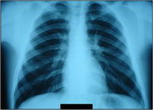
The Ministry of Health has taken the step of publicizing here on its web site, the detailed but anonymised radiological findings of three cases of human H5N1 avian influenza. We do so in the hope that this will improve National and International understanding of this emerging disease. The close monitoring of these 3 cases especially demonstrates how subtle the early radiological findings can be and the value of epidemiological data in assisting clinical interpretation. We again pay our deepest respects to the few families who suffered such tragic losses and acknowledge the professionalism of epidemiologists, veterinologists, doctors, nurses, laboratory and radiological staff at village, district and central level in their efforts to recognize and control this challenging disease.
These three cases were all laboratory confirmed. The detailed epidemiology has been described in the WHO publication Weekly epidemiological record (Human avian influenza in Azerbaijan, February-March 2006. Wkly Epidemiol Rec. 5 MAY 2006:81(18):183-8 http://www.who.int/wer/2006/wer8118.pdf) and in the journal Eurosurveillance (Euro Surveill 2006;11(5):122-6 http://www.eurosurveillance.org/eq/2006/02-06/pdf/eq_5_2006_122-126.pdf)
A detailed clinical description is being prepared for publication and the clinical, laboratory and epidemiological databases have been shared among our National experts and with the WHO.
Information to accompany the images
Рентгенологические снимки можно посомтреть на http://health.gov.az/article.php?h5n1_en
Case 1
This 16 year old male was started on Oseltamivir on the 4th day of illness. In spite of intense supportive therapy he died on the 10th day of illness.
Cases 2 and 3
Both cases had low grade fever (<37.5C) for 2 days. They were observed and immediately started on oseltamivir. The low grade fever settled in both cases within 1.5 to 2.5 days and oseltamivir was discontinued after 4 days when they were discharged back to community surveillance, with no symptoms and after examination and laboratory testing remained normal. They both subsequently developed high fever (>38C). The families agreed to their re-hospitalization where they received supportive therapy (which included oxygen sometimes at high flow rates according to oxygen saturation findings), and recommencement of oseltamivir. Because of uncertainty including that surrounding potential exposure or even re-exposure , the day of onset is described here as both the day from second onset of fever followed in parentheses by the day from initial onset of the transient low grade fever. These cases became apyrexial during day 12 or 13 (19or20).
| 

